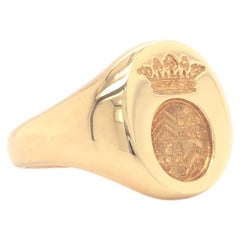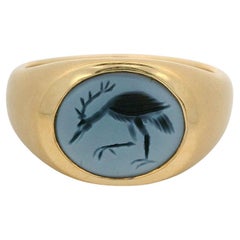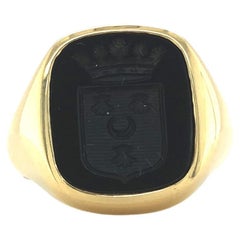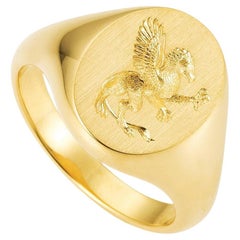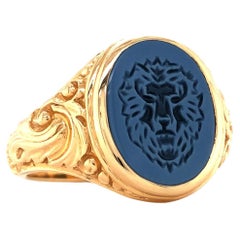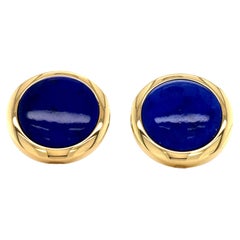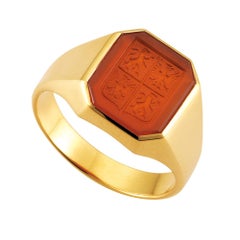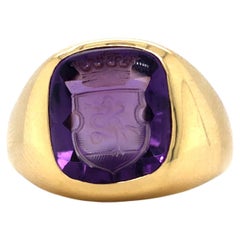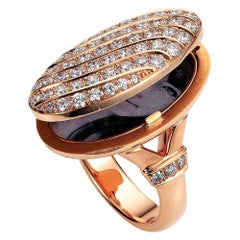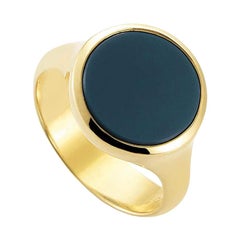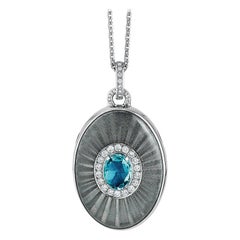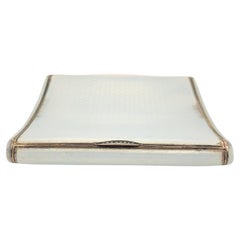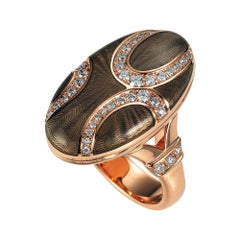Victor Mayer
Renowned for intricate and sophisticated jewelry, the Victor Mayer company has created personal adornments of the highest quality for over a century. Using complex guilloche and enamel techniques, the German manufacturer is known for its hoop earrings, pendants and cufflinks, while its authentic Victor Mayer Fabergé egg pendants, featuring delicate embellishments and exquisite enameling, have been especially popular with generations of connoisseurs.
Aftering studying at the Grand Ducal School of Arts and Crafts in Weimar, Germany, and training for three years in Vienna, Victor Mayer opened his jewelry business in 1890, in Pforzheim, Germany. His craftsmanship rapidly gained renown across Europe.
Ever mindful of evolving tastes, the company underwent three major style changes in Mayer’s lifetime, beginning with a focus on the Belle Époque of the late 19th century. It later adapted when Mayer saw that Art Nouveau was taking off around the world. The company remained operational during the first World War, and then once again adjusted its style to match the rising influence of Art Deco.
World War II shut down the Victor Mayer company, as jewelry was considered a non-essential wartime industry. After the war ended, the company slowly reopened and experienced a slight uptick in business.
Mayer died in 1946. His son, Oscar, and businessman Edmund Mohr managed the company together until the 1960s. Under Mohr and Mayer, it became a leader in producing fine accessories for gentlemen, while continuing to create jewelry for women.
In the 1960s, Mayer’s son, Hubert, and Mohr’s son, Herbert, succeeded their fathers. The duo steered the company in a new — but classic — creative direction. While in art school, Mohr had absorbed all he could regarding the artistic patronage of the Tsars. In the 1980s, he designed the company’s Esprit de Fabergé collection, which was modeled after the exuberant style of the master Fabergé crafters.
In 1989, the long-dormant House of Fabergé appointed the Victor Mayer company to be its workmaster until 2009. During this time, the company not only grew its customer base throughout Europe, Southeast Asia and North America, it revived the Fabergé jewelry line.
In 2005, Mohr retired, and his son, Marcus, took over the company’s management. Under his leadership, the Victor Mayer jewelry company continues to thrive and produce incomparable works of timeless elegance.
Find antique and vintage Victor Mayer necklaces, rings, bracelets and other jewelry on 1stDibs.
21st Century and Contemporary German Contemporary Victor Mayer
18k Gold, Yellow Gold
21st Century and Contemporary German Contemporary Victor Mayer
Onyx, 18k Gold, Rose Gold
21st Century and Contemporary German Contemporary Victor Mayer
Onyx, 18k Gold, Yellow Gold
21st Century and Contemporary German Contemporary Victor Mayer
18k Gold, Yellow Gold
21st Century and Contemporary German Contemporary Victor Mayer
Onyx, 18k Gold, Rose Gold
21st Century and Contemporary German Art Deco Victor Mayer
Lapis Lazuli, 18k Gold, Yellow Gold
21st Century and Contemporary German Contemporary Victor Mayer
Carnelian, Yellow Gold, 18k Gold
21st Century and Contemporary German Contemporary Victor Mayer
Amethyst, 18k Gold, Yellow Gold
Popular Searches
Victor Mayer Sale Prices
| Sold Date | Sold Price | Category | Material | Creation Year | ||||||||||||||||||||||||||
|
| $2,427 |
Average sold price of items in the past 12 months |
| $263-$4,056 |
| Sold price range of items in the past 12 months |
